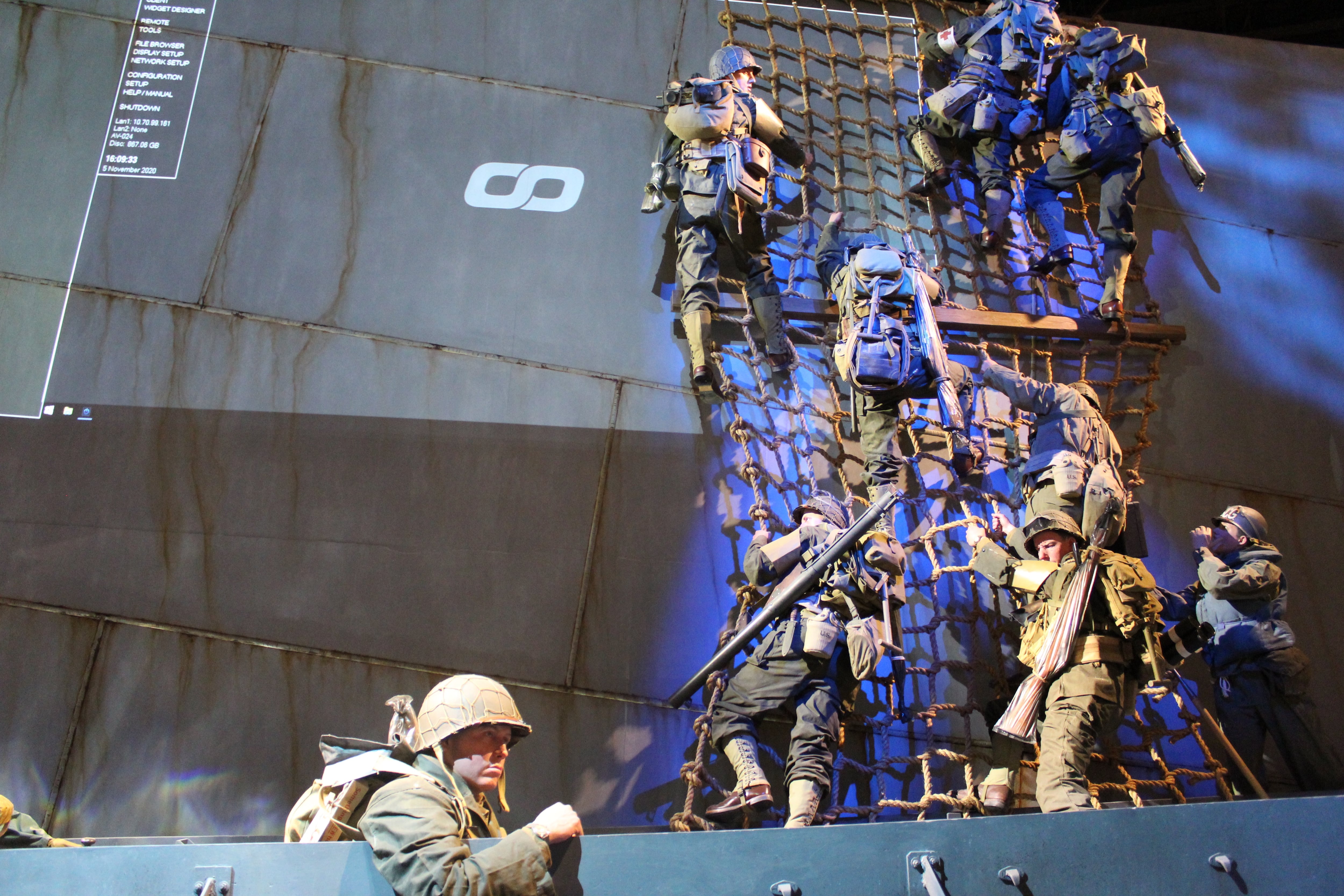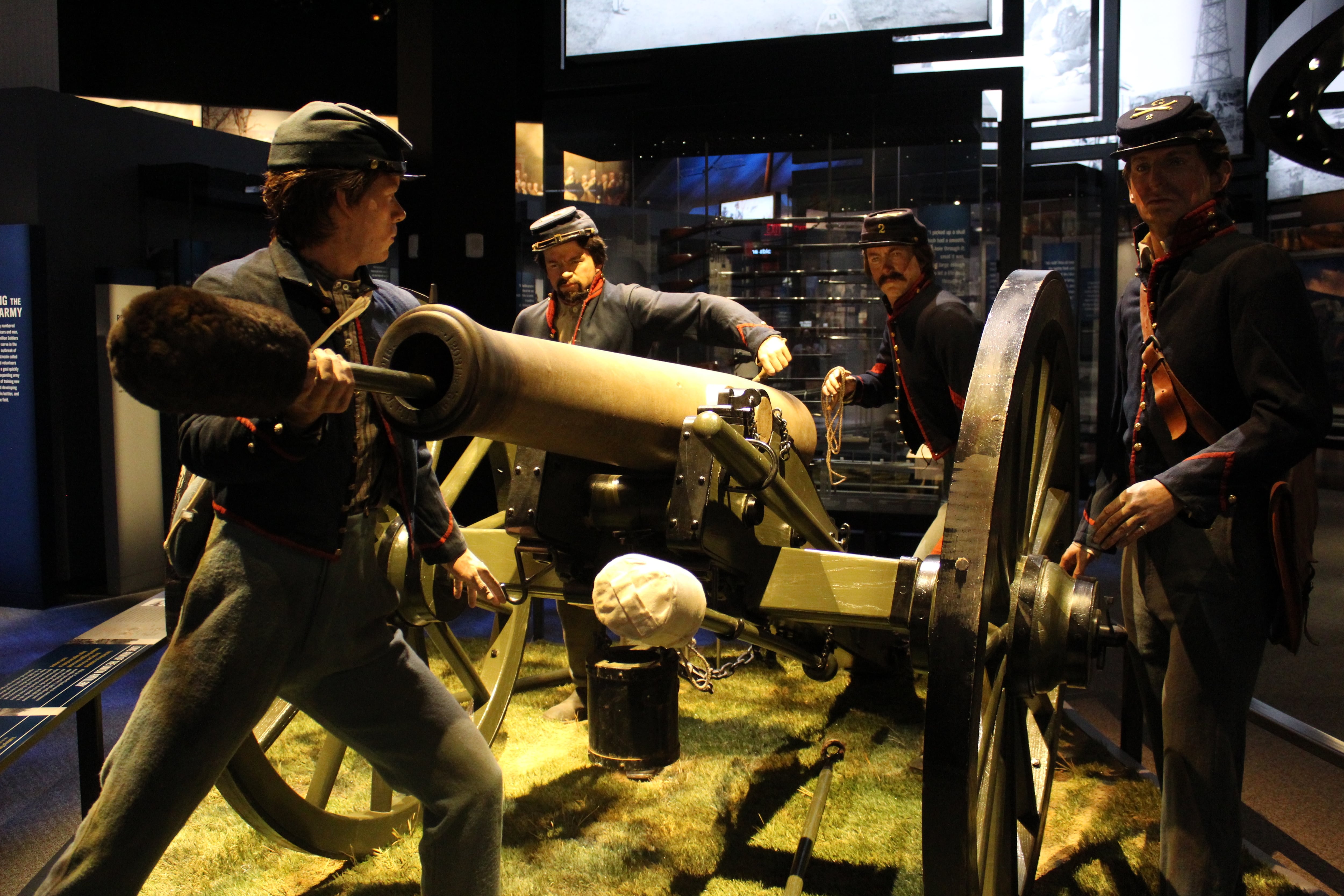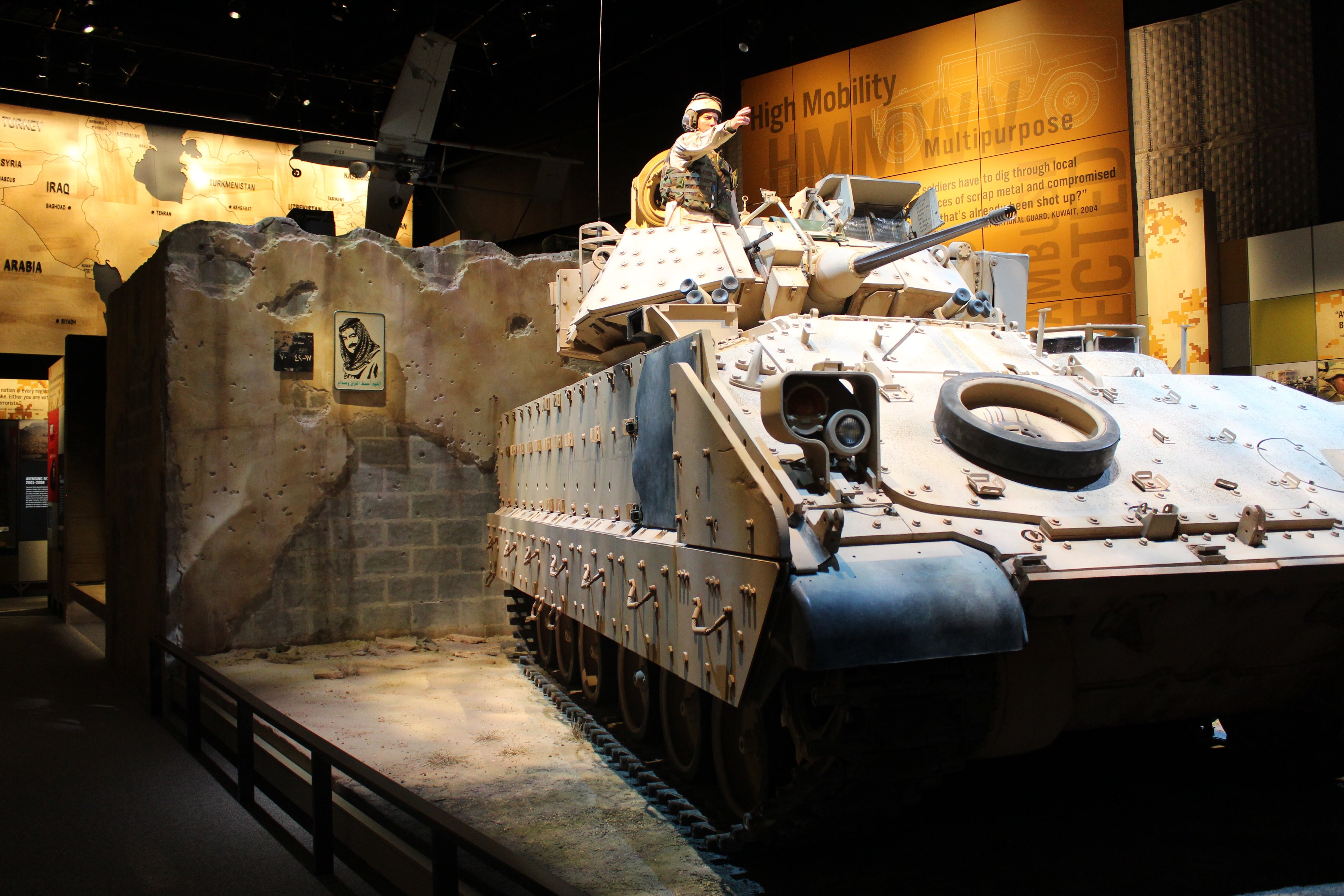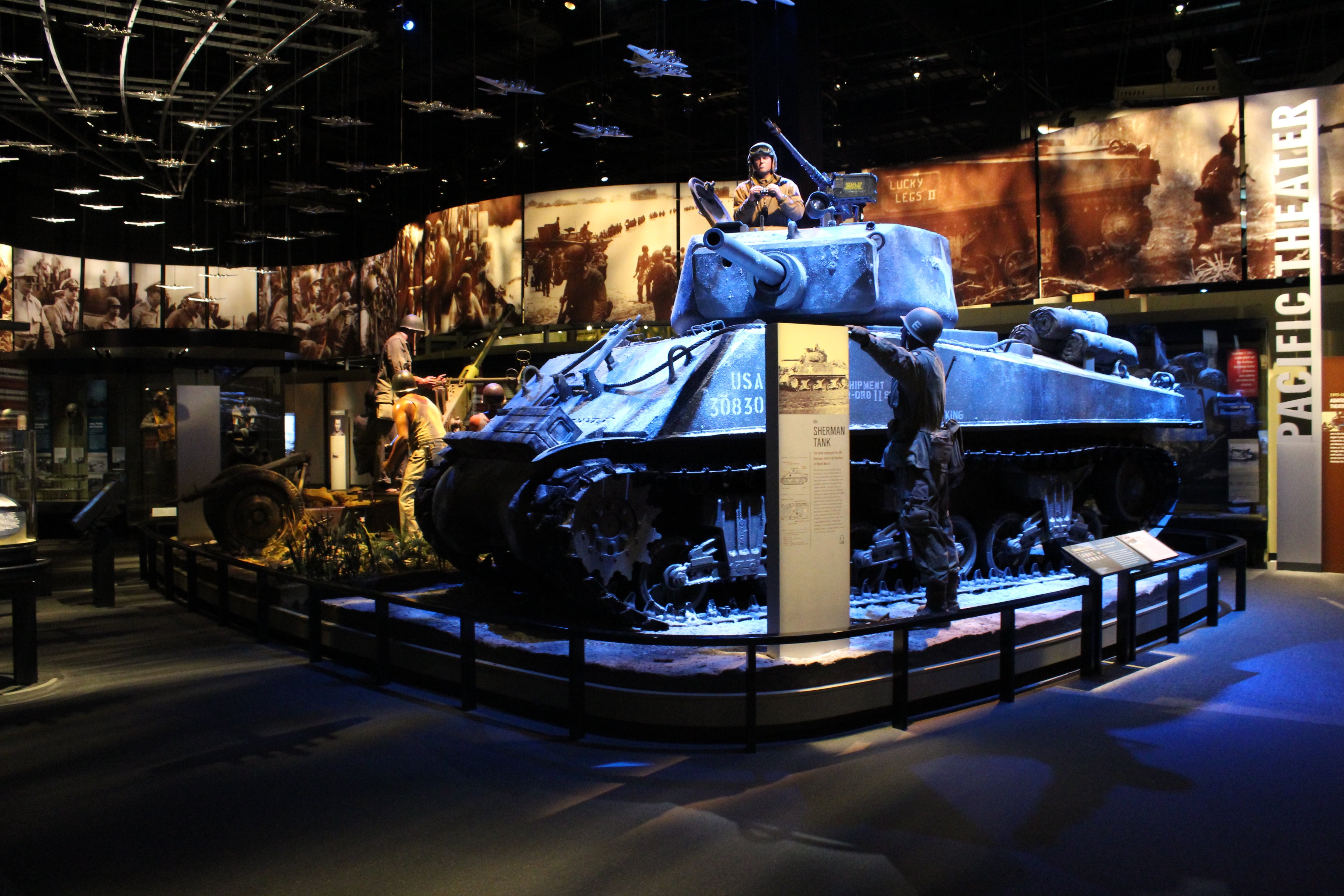A saber used during the 1814 Battle of Baltimore and “hillbilly armor” crafted by underfunded U.S. troops during the early days of the Iraq War are among the 1,389 artifacts visitors can see for the first time at the National Museum of the United States Army this Veterans Day.
The 185,000-square-foot museum at Fort Belvoir, Virginia, opens Nov. 11 with free, timed-entry tickets available if reserved in advance. The museum, said its director, Tammy Call, traces the U.S. Army’s lineage back to the colonial militias that formed in the early 1600s.
“We tell the Army’s history here through the eyes and voices of soldiers,” Call said, pointing to the annotations found inside a Bible carried by one soldier who survived the Bataan Death March. “Those artifacts that have those personal connections to that soldier and tell that story, that’s what gives me chills when I walk through.”
Many artifacts are traced to actual people, either by how they were donated to the museum or through inscriptions left on the items, such as a powder horn personalized with engravings by Sgt. Levi Gassett, a minuteman present at the 1775 Siege of Boston.
“One of the keys in displaying an artifact is you want to make sure there’s a personal connection to a soldier,” said Paul Morando, the museum’s chief of exhibits.
“A helmet is a helmet, but Sgt. [Alvin] York wore that helmet," Morando added. "It gives strength and resonance when people can connect. That was the helmet [York] wore when he earned his Medal of Honor, or those are the boots Audie Murphy wore, or whatever the object may be.”

Seventy life-like mannequins across the museum were even cast using actual soldiers' faces, limbs and torsos, an extra element that brings the exhibits to life, according to Call.
Elsewhere in the museum, visitors can have theatrical experiences, including stepping foot into a World War I trench, riding inside a World War II tank and taking flight in historic aircraft.
The museum broke ground about three years ago and cost roughly $400 million, split between the nonprofit Army Historical Foundation and the Department of the Army itself. The building was constructed through fundraising, while the Army provided the infrastructure, roads, utilities and exhibit designs.
Exhibits in the museum document conflicts from the American Revolution through recent operations against the Islamic State of Iraq and Syria, including lesser-known wars in the early 20th century. An entire section is dedicated to the “Army’s first venture onto the world stage,” and chronicles the Boxer Rebellion, the Spanish-American War and campaigns along the Mexican-American border.
The museum won’t shy away from controversial parts of Army history, either, according to the exhibits chief, Morando.

“We do discuss My Lai; we do discuss Abu Ghraib," Morando said. “These events happened and they’re not indicative of the Army’s values. … But more importantly, we also have the ability through our programs and education partners to expand on those stories through lectures and book talks.”
The museum’s “Army and Society Gallery” documents social issues the service encountered, especially during the Civil Rights era, which included the U.S. military’s move to desegregate in 1948 through an executive order.
“That gallery is very unique, because we’re not just talking about the history of the Army, we’re also addressing social issues — the role of women in the Army, the role of African Americans and Japanese Americans," said Morando.

The museum’s first temporary exhibit showcases what it advertised as “an unprecedented collection of Japanese American artifacts” that capture the story of Nisei soldiers during World War II, highlighting their struggles against discrimination at home, as well as their wartime exploits.
The exhibits take attendees through Army history to the invasions of Iraq and Afghanistan, displaying one of the saddles famously used by U.S. special operations forces who rode horses alongside the Northern Alliance, as well as other artifacts of the era.
Right now, the exhibits' timeline ends with Iran’s response to a U.S. drone strike that killed Iranian Quds Force commander Maj. Gen. Qassem Soleimani earlier this year.
“We end the story line in January 2020 with the missile attacks on our soldiers at [al-Asad] air base,” said Call, the museum director. “And we have soldier artifacts that we have been able to receive that we will have on display.”
Though it may be hard to know the historical significance of an event when one is living through it, the strike on that air base in Iraq was one the museum felt necessary to preserve and chronicle.
“It is so important, just like all the artifacts in the exhibit wing … to get them, to take care of them and to have them available," Call added.
Kyle Rempfer was an editor and reporter who has covered combat operations, criminal cases, foreign military assistance and training accidents. Before entering journalism, Kyle served in U.S. Air Force Special Tactics and deployed in 2014 to Paktika Province, Afghanistan, and Baghdad, Iraq.



